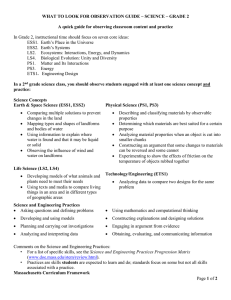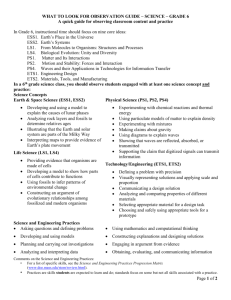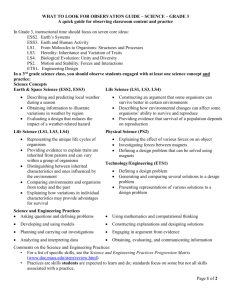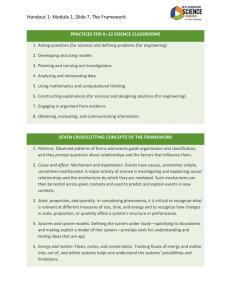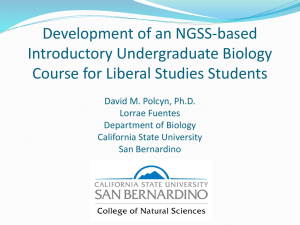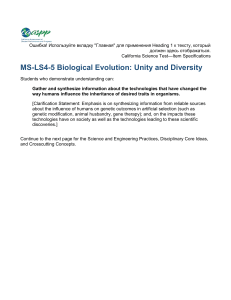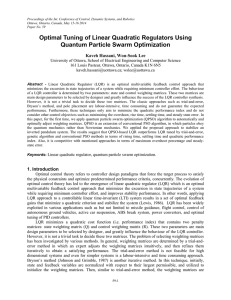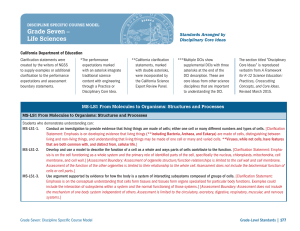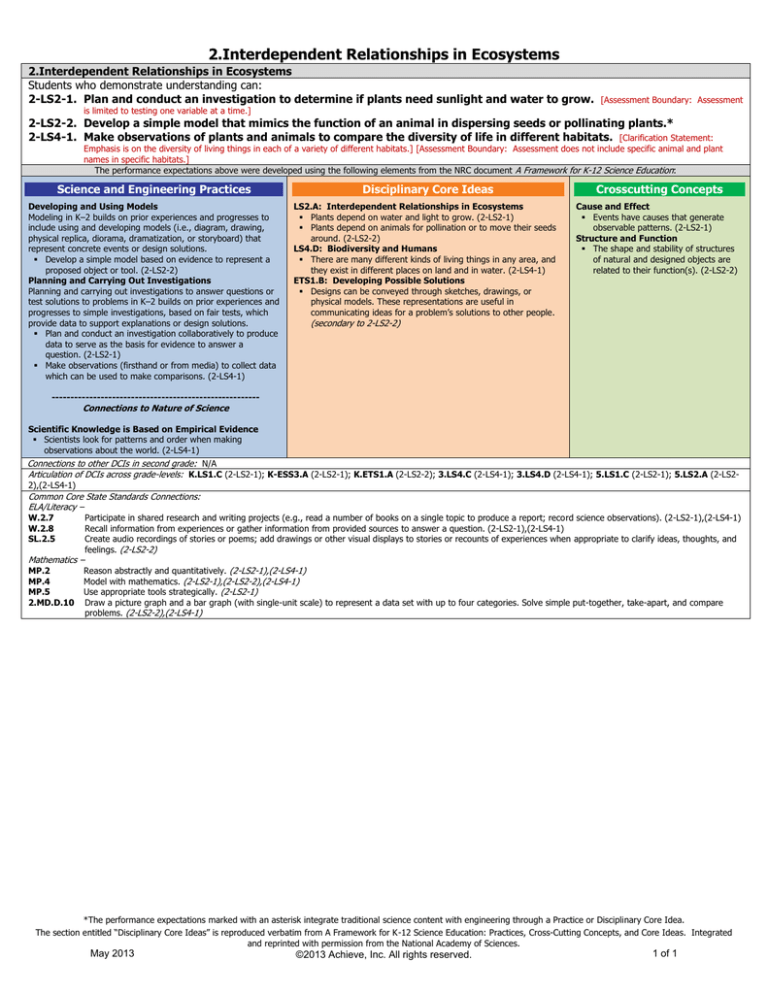
2.Interdependent Relationships in Ecosystems
2.Interdependent Relationships in Ecosystems
Students who demonstrate understanding can:
2-LS2-1. Plan and conduct an investigation to determine if plants need sunlight and water to grow.
[Assessment Boundary: Assessment
is limited to testing one variable at a time.]
2-LS2-2. Develop a simple model that mimics the function of an animal in dispersing seeds or pollinating plants.*
2-LS4-1. Make observations of plants and animals to compare the diversity of life in different habitats. [Clarification Statement:
Emphasis is on the diversity of living things in each of a variety of different habitats.] [Assessment Boundary: Assessment does not include specific animal and plant
names in specific habitats.]
The performance expectations above were developed using the following elements from the NRC document A Framework for K-12 Science Education:
Science and Engineering Practices
Developing and Using Models
Modeling in K–2 builds on prior experiences and progresses to
include using and developing models (i.e., diagram, drawing,
physical replica, diorama, dramatization, or storyboard) that
represent concrete events or design solutions.
Develop a simple model based on evidence to represent a
proposed object or tool. (2-LS2-2)
Planning and Carrying Out Investigations
Planning and carrying out investigations to answer questions or
test solutions to problems in K–2 builds on prior experiences and
progresses to simple investigations, based on fair tests, which
provide data to support explanations or design solutions.
Plan and conduct an investigation collaboratively to produce
data to serve as the basis for evidence to answer a
question. (2-LS2-1)
Make observations (firsthand or from media) to collect data
which can be used to make comparisons. (2-LS4-1)
Disciplinary Core Ideas
LS2.A: Interdependent Relationships in Ecosystems
Plants depend on water and light to grow. (2-LS2-1)
Plants depend on animals for pollination or to move their seeds
around. (2-LS2-2)
LS4.D: Biodiversity and Humans
There are many different kinds of living things in any area, and
they exist in different places on land and in water. (2-LS4-1)
ETS1.B: Developing Possible Solutions
Designs can be conveyed through sketches, drawings, or
physical models. These representations are useful in
communicating ideas for a problem’s solutions to other people.
Crosscutting Concepts
Cause and Effect
Events have causes that generate
observable patterns. (2-LS2-1)
Structure and Function
The shape and stability of structures
of natural and designed objects are
related to their function(s). (2-LS2-2)
(secondary to 2-LS2-2)
-------------------------------------------------------
Connections to Nature of Science
Scientific Knowledge is Based on Empirical Evidence
Scientists look for patterns and order when making
observations about the world. (2-LS4-1)
Connections to other DCIs in second grade: N/A
Articulation of DCIs across grade-levels: K.LS1.C (2-LS2-1); K-ESS3.A (2-LS2-1); K.ETS1.A (2-LS2-2); 3.LS4.C (2-LS4-1); 3.LS4.D (2-LS4-1); 5.LS1.C (2-LS2-1); 5.LS2.A (2-LS22),(2-LS4-1)
Common Core State Standards Connections:
ELA/Literacy –
W.2.7
W.2.8
SL.2.5
Mathematics –
MP.2
MP.4
MP.5
2.MD.D.10
Participate in shared research and writing projects (e.g., read a number of books on a single topic to produce a report; record science observations). (2-LS2-1),(2-LS4-1)
Recall information from experiences or gather information from provided sources to answer a question. (2-LS2-1),(2-LS4-1)
Create audio recordings of stories or poems; add drawings or other visual displays to stories or recounts of experiences when appropriate to clarify ideas, thoughts, and
feelings. (2-LS2-2)
Reason abstractly and quantitatively. (2-LS2-1),(2-LS4-1)
Model with mathematics. (2-LS2-1),(2-LS2-2),(2-LS4-1)
Use appropriate tools strategically. (2-LS2-1)
Draw a picture graph and a bar graph (with single-unit scale) to represent a data set with up to four categories. Solve simple put-together, take-apart, and compare
problems. (2-LS2-2),(2-LS4-1)
*The performance expectations marked with an asterisk integrate traditional science content with engineering through a Practice or Disciplinary Core Idea.
The section entitled “Disciplinary Core Ideas” is reproduced verbatim from A Framework for K-12 Science Education: Practices, Cross-Cutting Concepts, and Core Ideas. Integrated
and reprinted with permission from the National Academy of Sciences.
May 2013
©2013 Achieve, Inc. All rights reserved.
1 of 1

